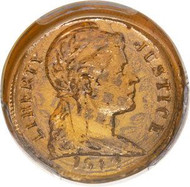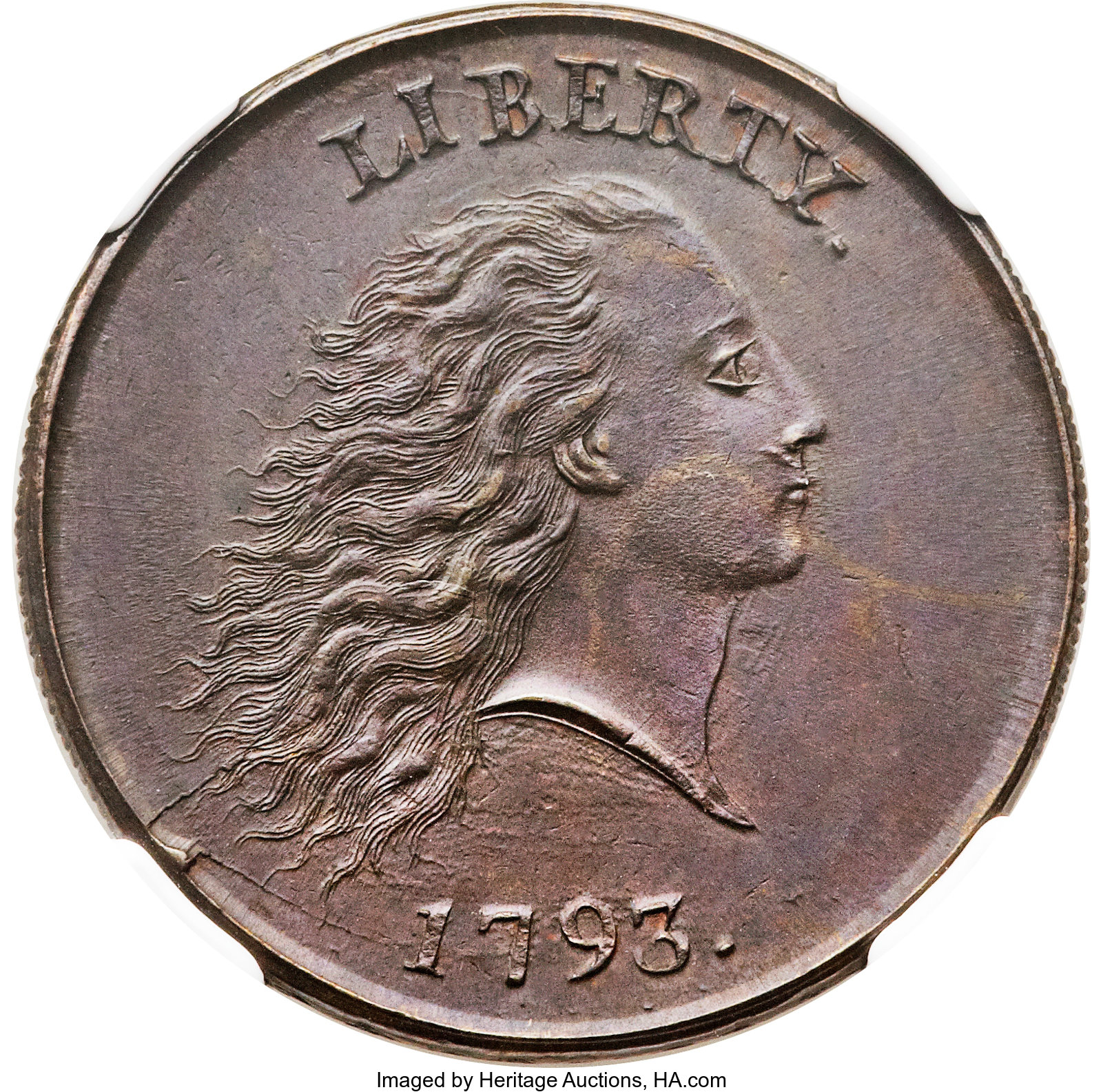The Most Important Pennies You Need To Know About
Posted by Bullion Shark on Jul 9th 2021
Pennies You Need To Know About
The penny, or one cent coin – first issued in 1793 in a large copper version (26-27 millimeters) and struck every year in that size from then until 1857 except 1815 when a lack of copper prevented its production – has long been the workhorse of U.S. coinage.
They were the first coins issued for circulation by the U.S. Mint, and for much of our history have played a key role in commerce, especially when a penny was actually worth something. As a result of inflation, the penny today has lost almost all its purchasing power.
The most valuable penny to date is a 1793 Flowing Hair PCGS MS66 Brown CAC that sold for 2,350,000 in 2015.
In 1856 the small cent debuted of the Flying Eagle variety (used only for two years until the Indian Head penny debuted in 1859) and was made of .880 copper and .120 nickel. By this time, the large copper coins had become unpopular with Americans and mainly circulated only in the large cities. In addition, the cost to produce the large copper cents was rising, which is why the size was reduced and nickel was added.
Small cents have continued to be issued to this today – sometimes in copper nickel and sometimes in bronze, such as during the Civil War when copper was scarce and like silver and gold was hoarded. Bronze cents of the Indian Head type were issued from 1864 to 1909.
Wheat Penny
The Lincoln wheat penny debuted in 1909 and continued to be made in bronze until World War II when copper and nickel were needed for the war effort, so in 1943 the cents were made of zinc-coated steel, and then in 1944 until 1958 they were made again from bronze. The Wheat Penny is one of the most sought-after varieties by collectors.
In 1943 some copper planchets accidentally made their way into hoppers intended for steel pennies and resulted in a small number of very rare copper wheat pennies, including 10 to 15 known examples of 1943, just one 1943-D and 5 examples of 1943-S pennies made of copper. Each of those pennies is worth at least $1 million, and the unique 1943-D sold in 2020 for $1.7 million, the second highest amount for a penny after the 1793.
In addition, there are also very rare steel pennies, 1944 (25-30 known) and 1944-D (only 7 known), that were produced the same way, i.e., zinc planchets from 1943 made their way into hoppers for copper pennies. Those two are not quite as valuable as the 1943 copper cents.
Then the Lincoln memorial reverse penny was introduced in 1959 and made of .950 copper with the rest being zinc and tin. In 1982 the composition was changed again to copper-plated zinc (99.2% zinc with a plating of pure copper), which has remained what they are made of to this today. Using that material for pennies not only saves money because steel is cheaper than copper but it also makes the dies more durable so they can be used to strike more coins.
Coin Shortage
Today the U.S. Mint produces billions of pennies every year that cost 1.76 cents to produce and distribute. In the month of May alone 818 million pennies were struck (and almost 3 billion total for 2021 so far), which is up more than 50% over a year ago. In 2020 because of the pandemic there was less demand for coins with most people staying home most of the time and paying with credit and debit cards. With the partial end of the pandemic, demand for coinage has increased, so the Mint has ramped up production.
At the same time, since last year there has been a problem getting coins to circulate enough, largely because fewer people are rolling up their coins like pennies and bringing them in to the bank to redeem. This has resulted in a shortage of coins in certain parts of the country, especially at businesses in those areas, which have been offering premiums for coins. The Mint’s Director David J. Ryder recently issued a You Tube video asking coin collectors to do their part to get coins circulating in the economy by using exact change and seeing if their banks need them to bring their coins in.
Alternate Materials
The fact that pennies cost almost twice their face value to make (and in the past that cost has been even higher) has for decades resulted in an ongoing effort to find alternative materials from which to make the coins.
During World War II prior to settling on zinc-coated steel pennies, the Mint worked with various manufacturers to develop cents made of various materials, including plastic of different colors, fiber and even glass pennies made by the Blue Ridge Glass Company in Tennessee, which made test pennies from tempered, yellow-amber glass from the Corning Glass company. The glass pennies were susceptible to chipping and breaking, and a rare surviving example in Proof 64 condition (the sold intact example that still exists) sold in 2017 for $70,500.
In 1973 the idea of striking them from aluminum became popular because it was cheaper than copper and more durable and better resisted corrosion. 1.5 million pennies made of 96% aluminum (plus an alloy of trace metals) were struck and planned to be released in 1974. But the vending machine opposed the coins, and the cost of copper declined, so the coins were recalled. However, some (estimated to be 12 to 14 pennies) were never returned.
One 1974-D penny (the Lawrence example) whose owner’s father once worked as a superintendent at the Denver Mint was allowed to keep the coin according to a judge’s ruling, but he returned the coin to the Mint. Another one was once donated to the Smithsonian Institution, and a third example was reportedly once discovered by a Capitol Police Officer. These coins are all considered government property, and no one has ever tried to sell one.
Latest Trends
More recently, the Mint has for the past five years been required by the Congress to prepare a biennial report on technological research into alternate compositions for circulating coinage, including not just the cent but also the nickel, dime and quarter (although only the first two cost more to produce than their face value).
The latest research from this effort suggested there could be some possible savings from producing copper-plated steel cents rather than today’s copper-plated zinc cents, and the coins would have the same weight and size as current pennies but a different electromagnetic signature. Since pennies are no longer used in vending machines, that would be less of a problem than in years past.
Finally, keep in mind that changing the composition only impacts that part of the cost since there is also the cost to have the pennies distributed by the Federal Reserve to banks around the country.
All things considered, it likely the U.S. will not go the way of Canada and most other countries any time soon and get rid of its pennies for circulation, especially given the popularity of President Lincoln. And even if at some point it does ditch the penny for commerce, the Mint will likely keep making them for collectors.



